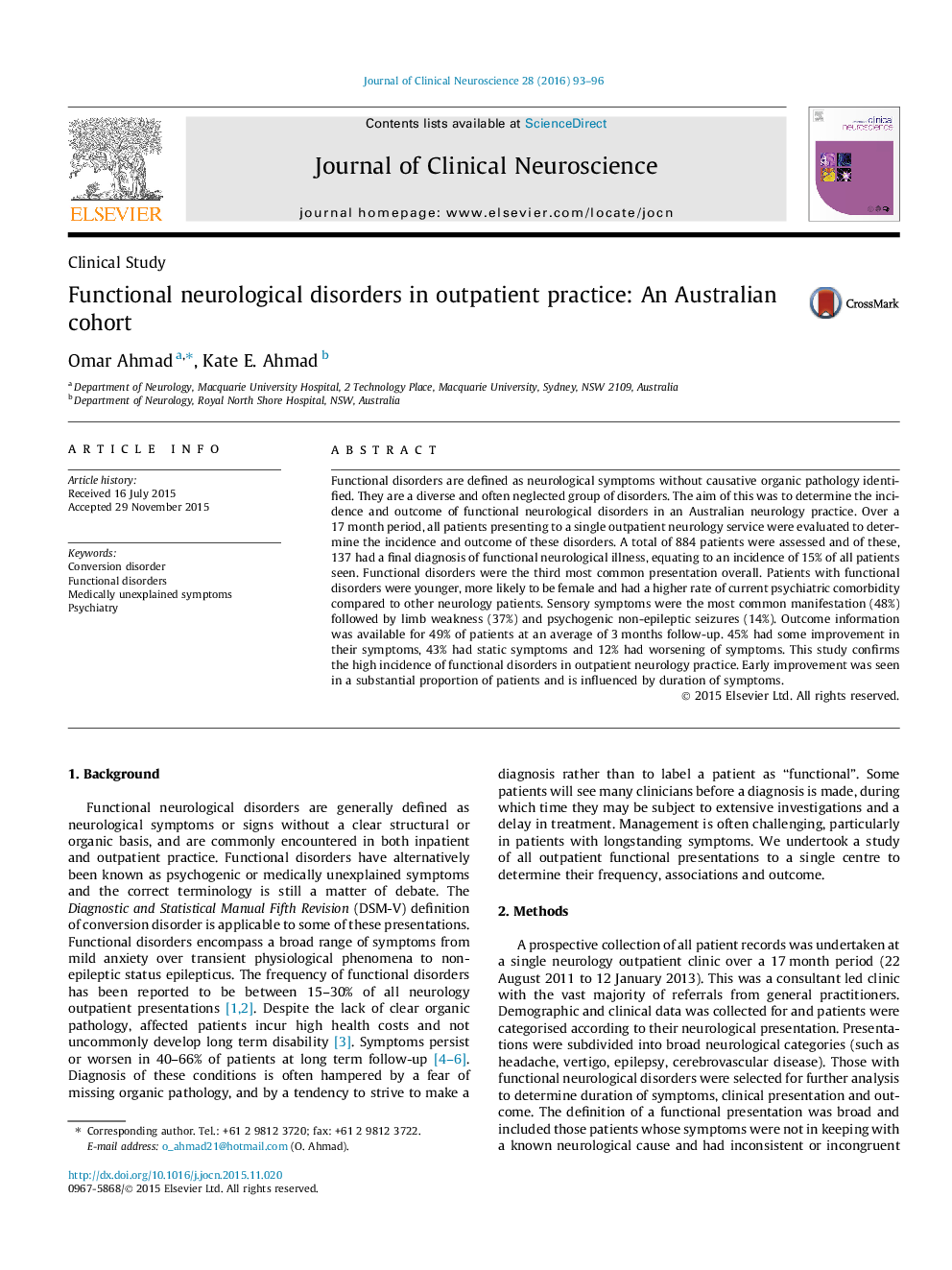| Article ID | Journal | Published Year | Pages | File Type |
|---|---|---|---|---|
| 3058354 | Journal of Clinical Neuroscience | 2016 | 4 Pages |
•Functional neurological disorders constitute around 15% of all outpatient presentations.•Associations with younger age, female sex and psychiatric comorbidity were noted in this cohort.•45% of patients experienced early improvement in symptoms.•Improvement is associated with a shorter duration of symptoms.
Functional disorders are defined as neurological symptoms without causative organic pathology identified. They are a diverse and often neglected group of disorders. The aim of this was to determine the incidence and outcome of functional neurological disorders in an Australian neurology practice. Over a 17 month period, all patients presenting to a single outpatient neurology service were evaluated to determine the incidence and outcome of these disorders. A total of 884 patients were assessed and of these, 137 had a final diagnosis of functional neurological illness, equating to an incidence of 15% of all patients seen. Functional disorders were the third most common presentation overall. Patients with functional disorders were younger, more likely to be female and had a higher rate of current psychiatric comorbidity compared to other neurology patients. Sensory symptoms were the most common manifestation (48%) followed by limb weakness (37%) and psychogenic non-epileptic seizures (14%). Outcome information was available for 49% of patients at an average of 3 months follow-up. 45% had some improvement in their symptoms, 43% had static symptoms and 12% had worsening of symptoms. This study confirms the high incidence of functional disorders in outpatient neurology practice. Early improvement was seen in a substantial proportion of patients and is influenced by duration of symptoms.
